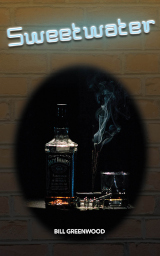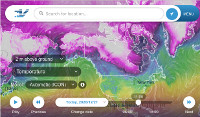Why this blog?
Until this moment I have been forced to listen while media and politicians alike have told me "what Canadians think". In all that time they never once asked.
This is just the voice of an ordinary Canadian yelling back at the radio -
"You don't speak for me."
email Kate
Goes to a private
mailserver in Europe.
I can't answer or use every tip, but all are appreciated!


Katewerk Art
Support SDA
Paypal:
Etransfers:
katewerk(at)sasktel.net
Not a registered charity.
I cannot issue tax receipts
Favourites/Resources
Instapundit
The Federalist
Powerline Blog
Babylon Bee
American Thinker
Legal Insurrection
Mark Steyn
American Greatness
Google Newspaper Archive
Pipeline Online
David Thompson
Podcasts
Steve Bannon's War Room
Scott Adams
Dark Horse
Michael Malice
Timcast
@Social
@Andy Ngo
@Cernovich
@Jack Posobeic
@IanMilesCheong
@AlinaChan
@YuriDeigin
@GlenGreenwald
@MattTaibbi
Support Our Advertisers

Sweetwater

Polar Bear Evolution

Email the Author

Pilgrim's Progress

How Not To Become A Millenial

Trump The Establishment
Wind Rain Temp

Seismic Map

What They Say About SDA
"Smalldeadanimals doesn't speak for the people of Saskatchewan" - Former Sask Premier Lorne Calvert
"I got so much traffic after your post my web host asked me to buy a larger traffic allowance." - Dr.Ross McKitrick
Holy hell, woman. When you send someone traffic, you send someone TRAFFIC.My hosting provider thought I was being DDoSed. - Sean McCormick
"The New York Times link to me yesterday [...] generated one-fifth of the traffic I normally get from a link from Small Dead Animals." - Kathy Shaidle
"You may be a nasty right winger, but you're not nasty all the time!" - Warren Kinsella
"Go back to collecting your welfare livelihood. - "Michael E. Zilkowsky
At 8,000 BHP/engine, I counted 296,000 BHP, or approximately 220.5 Megawatts equivalent.
Yeah, it’s not a “trillion,” but Holy Mary Mother of God, it’s still a lot.
Also flashed me back to living in Pitt Meadows, B.C. when the damned multi-hundred-double-stacked freight trains, kilometres in length, would waddle through our neighbourhood and cause the whole house to shake. Never again.
For what reason? Are they getting the cattle cars ready for some mass transport of unvaccinated at a central location? Could it be there are no longer CCP goods to ship from a particular geographic seaport location inland? News at six. <sarc
bverwey
SD 40-2’s are 3000HP each, total of 105,000 HP for 35 of them.
The only ones running are the BNSF units, 2 in front, 2 at the rear.
The rest are sold to NREX, for scrap or rebuild/lease, being hauled dead in line.
Yup. Short of a trillion HP by a factor of over 9 million. Math is hard.
One engine on a Boeing 777 has more horsepower than that string of locomotives.
https://www.theatlantic.com/technology/archive/2011/12/a-single-boeing-777-engine-delivers-twice-the-horsepower-of-all-the-titanics/250698/
One country moving more engines through one state than some countries even have.
Sadly, I see lots of them parked out here in the west; likely because we’re not moving nearly as much coal as we used to.
Of course, there is still a lot of oil to move, given the existential threat that pipelines present to mankind.
I noticed on the last Loco that it was the BNSF railway. (Warren Buffet)
Probably these locomotives are required to move oil from Alberta to the US in a Moving Keystone Pipeline.
I live in a town on the CPR (main line, I think) in Western Manitoba, driving around all day for work, and I see many trains barrelling through town since they fixed up the tracks and raised the train speed-limits. All are 100-120 oil tanker cars, pristine black with no graffiti tags, which to my untrained eye indicates that they never stop anywhere to acquire such adornment. I presume the eastbound are laden and the westbound are empty?
It’s great fun to think about sleeping every night with a rolling, clattering oil pipeline passing by two blocks away, 4 times a night…
(In past decades, it was grain cars or Sask Potash cars.)
Weird, eh?
Joe Biden had a trillion votes.
That is why he is president. 😉
That was an electric locomotive with its associated battery pack. Unfortunately there was no capacity left for cargo.